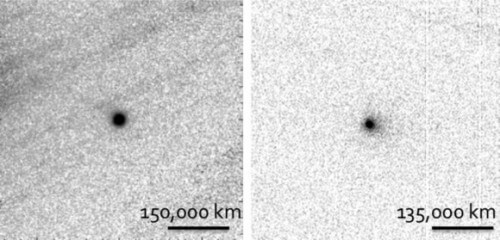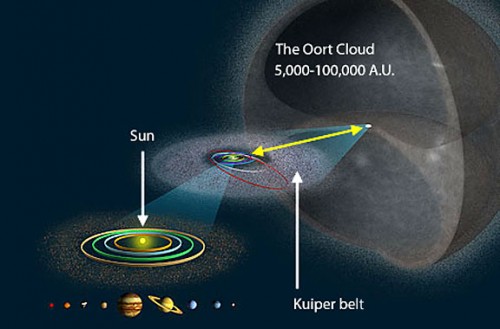Two objects with comet-like orbits passed through the solar system in 2013 and 2014, but showed no activity. It is possible that these are asteroid-like comets - a theoretical type of objects that have not yet been evidenced for their existence

While we were all busy with comet 67P -Churyumov-Grasimenko, which the Philae lander landed on after ten years of being attached to the Rosetta spacecraft, the many comets in the solar system continue to surprise scientists.
When does a comet not look like a comet? The question seems self-contradictory, but astronomers believe that such objects exist. When comets cross the solar system, they eject ice and dust as the sun heats them. Over time, some of the objects can move like ghost ships, only without the glaciers that used to make them ice.
There is already a type of such objects called democloids, which are believed to be dead comets, but scientists believe they have found something new in the two mysterious guests - what they call "naked comets" coming to us from the edge of the solar system.
The origin of both objects is in the region that astronomers call the Oort Cloud, a hypothetical collection of icy bodies 100 times the distance between the Earth and the Sun (that is, 100 astronomical units). The gravitational effects kicked these objects toward the Sun and they are now moving in orbits that may last for millions of years.
When Jan Ort proposed this theory in 1950, he said that some of these objects contain only a thin layer of ice that may evaporate immediately during the first pass by the Sun. And this is what astronomers believe they see in the objects C/2013 P2 Pan-STARRS and C/2014 S3 Pan-STARRS..

"Objects in such long orbits usually develop a large cometary tail, such as Comet Ison and Comet Hale-Bop, so we immediately see that these objects are unusual." says Karen Meech, an astronomer at the University of Hawaii at Manoa, who led the study. "I wondered if these objects might be the first evidence of the movement of the building blocks of the solar system from the inner solar system to the Oort cloud."
The Pan-Stars1 automated telescope discovered C/2013 P2 in August 2013, when astronomers commented that its orbit resembled that of a comet, but its surface was quiet. Another look at the object was taken later with the 8-meter Gemini North Telescope in Hawaii that revealed a light dust tail. The object moves with the same brightness, although it reached its closest point to the Sun (2.8 AU) in February 2014.
After the comet returned from its passage past the sun, and the telescopes were able to observe it again with the Gemini Northern Telescope, they found something strange: the spectrum of the object appears red, which makes it similar to the Kuiper belt itself - a kind of asteroid that moves in the shallow waters of the solar system - passed to the orbit of Neptune than to a typical asteroid or comet.
While scientists are analyzing the findings, a NASA survey found an object with similar properties C/2014 S3. When it was discovered, the object had already passed its point of approach to the Sun in August. But from analyzing its trajectory, the scientists saw that it reached a distance of only 2 astronomical units. Also, the first sightings showed only the remains of a tail.
![The distribution of objects in the Kuiper Belt (in green), along with other bodies in the Solar System, based on data from the Minor Planet Center. Photo: [Minor Planet Center; Murray and Dermott]](https://www.hayadan.org.il/images/content3/2014/11/Kuiper_belt1.png)
A closer examination of the object with the telescope shared by Canada, France and Hawaii revealed the mystery: the spectrum, which leaned more towards blue than red, hinted that its materials were similar to those found in the inner solar system. Team members say it may be the first of a new type of object.
"I will be very excited if it turns out that these objects show surfaces similar to those of the asteroids in the inner asteroid belt. If this is the case, it would be impressive for a body that is far in the depths of the solar system.” Mitch says.
"There are several models that try to explain how the planets grew in the early solar system, and some of them estimate that the materials formed close to the sun may have been thrown out into the outer solar system and into the Oort cloud, where they have remained until today. Maybe now we are finally seeing the evidence.”
The findings were presented Nov. 10 at the American Astronomical Society's Division of Planetary Sciences meeting in Tucson, Arizona.

One response
It is worth noting and enlightening - that science only hypothesizes the existence of thousands of comets.
In practice, less than 300 periodic comets are known, and several hundred or thousands of non-periodic comets